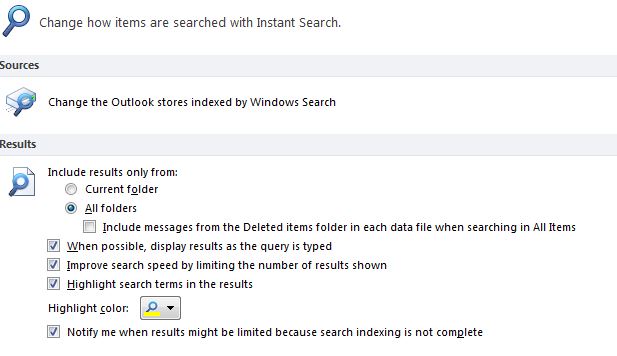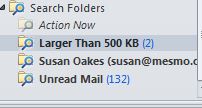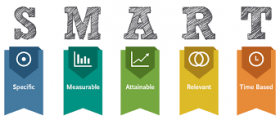Top tips from Mesmo Consultancy (and Associates) on how to save time and improve business and personal performance by ‘Taking Control of your Inbox’ and using proper business email etiquette.
However difficult life may seem, there is always something you can do and succeed at.
Stephen Hawking
And sometimes we allow technology to make our lives even more difficult, for example by using Google instead of our brain to find the solution to a problem as illustrated by the first article of note. Here is Mesmo Consultancy’s top five articles on business email management for April.
1. Facebook and Instagram are killing off our memories. A new study has found what many have long suspected. The constant use of smart phones is altering our memories by stopping our brain from making a full note of the moment we are experiencing. That is noting smells, colours, voices and their tone etc all of which help us recall the facts relating to that moment.
2. Stanford students demand Apple help them stop using their phones so much. The intrusion of smart phones into our lives and the potential havoc it can wreck has also been the focal point of recent protests to Apple by students from Stanford University. If the post Millennial Generation are starting to protest perhaps it is time we too ‘should look up at the starts and not down at our feet’.
3. In France it’s illegal to expect employees to email after hours – and now New York could be next. Yes, New York is considering following in France and Germany’s foot steps. Could this happen in the UK where we already have some of the longest working hours in Europe. It would be a great shame if we did use a sledge hammer to crack this nut rather than cajoling business leaders into implementing some sustainable email management practices.
4. Its time to get rid of the to-do-list. Articles by Alexandra Samuel are always through provoking. How often have you missed an important deadline even though its been on your to-do-list? Here Samuels bares her soul and owns up and suggests some ways to over come the challenge. For example, prune the to-do-list once a week. Use the calendar for tasks with absolute deadlines, add a follow-up flag on emails or use a service like Boomerang.
5. Malware attacks leveraging MS Word documents grew by 33% in Q4. Hackers are increasingly sending malware hidden in Word documents. You receive an innocent email which says ‘this document is protected, enable editing to view content’. Forget it. As you activate the editing function in Word so you activate the malware. Increasingly organisations (large and small) need multi-relayed security applications.
Tags: Alexandra Samuel, Facebook and memory, Instagram and memory, Malware, Smart Email Management, Task-lists
Finding emails often comes up as a request for more information during Smart Email Management workshops. Nothing is more frustrating than trying to find an email you know you received/sent but it’s not where you expected it to be. As you start to waste time so the stress levels rise too. Here are four easy ways to find that elusive email. Outlook starts with the inbox but there are several ways to search all your folders.
1. Click the hyperlink ‘Try searching again in All Mail Items’. If you are not good at keeping your inbox clean it is easy to overlook this link at the bottom of the initial inbox search.

2. Set the default to Search All Folders. Outlook defaults to the folder you have highlighted, usually the inbox. To make it automatically search all folders go to File/Options/Search and check the box marked All Folders. Then click OK. Now all your future searches should search all your mail folders. Clearly with a big inbox you might need to refine your search criteria.

3. Remove any search limits. The default in Outlook is to ‘Improve search speeds by limiting the number of results shown’. The limit is about 250. If you have an enormous inbox you may need to override this setting. As As in (2), Go to File/Options/Search and uncheck the box marked ‘Improve search speeds by limiting the number of results shown’.
4. Use the Search Folders At the bottom of your Inbox is a set of ‘Search Folders’.
There are a few pre-defined ones such as Larger Than 500 KB. However you can set up some personalised ones too and especially for those searches you do frequently eg from a key contact but whose emails might be filed in several folders. Right click on the Search Folders (folder) and use the Dialog Box which appears.
Don’t forget, the bigger your inbox the harder and longer it might take to find that elusive email. If you just spend more than ten minutes searching for an important email, now might be the time to start seriously de-cluttering.
All these tips assume all the emails you need are in your personal inbox. This is often not the case when they are project related. They may be scattered across several inbox and sets of public folders. In this case you need to look at using a dedicated email management application such as Mail Manager.
Tags: Finding emails, Mail Manager, Outlook
Business email management articles for February focus on having a digital detox, what happens when senior managers keep emails late at night and on Sunday evenings and reducing email overload by viewing your inbox as an information toll road.
Life is like riding a bicycle. To keep your balance you must keep moving.
Albert Einstein
This reminded me of how people often say they feel about trying to keep on top of their inbox. Add to that recent research on the toxic effect a senior manager has on his team’s well-being when he sends emails on Sunday, it is therefore little wonder that having a digital detox has been a persistent theme these last two months.
1. If you multitask during a meeting your team will do so to. The theme is not new, as the senior manager your behaviour sets the role model for your team but it seems that they are often blind to it and especially in terms of meeting and email behaviour. Whilst as a senior manager you might want to put aside time on Sunday to prepare for the week, you should not expect your team to do so. However, in reality every hour a senior manager spends on out of hours emails, translates into an extra twenty minutes of additional time for their direct reports.
2. Why quitting smart phones is the new quitting smoking. Had enough of friends and colleagues checking their smart phones whilst you are talking to them? Well you might not have to put up with such bad behaviour for ever.
3. How to Break Up with your Phone. If you need help with your digital detox a new book is at hand by Catherine Price. Click here for review. No we don’t have a copy because in our eyes it is all about that old fashioned skill of restraint and being comfortable with one’s own company. And once you have restrained, treat yourself for reaching your goal. Then stretch the goal a little more. And round the loop you go again.
That said, if you are suffering from serious social media addiction you might find a few useful tips.
Otherwise call us about our cure email addiction coaching programme.
4. Digital distractions are making us dumb and twitchy. I think we already know this but one interesting factor to emerge from a recent study is the role of pen and paper to help re-engage the brain and reduce the impact of information overload. And it can be part of your digital detox tool box.
5. View your inbox as a toll road to reduce email overload. This is a short article from Dr Seeley on how you can use the toll road approach to quickly ensure only the really important emails make it into your main inbox. There is a longer more detailed version in Taking Control of Your Inbox.
Tags: Digital detox, Multitasking, Quitting smart phones, Reducing business email overload, Senior manager's role model, well being, Work life balance
Is email the only way? We now have an array of digital communications from social media to the phone. Last week a client complained at being emailed by another colleague who sat just five desk away. How often does this happen to you? We have a love hate relationship with email: its fast and easy but not always the best communications channel. An over dependence on email at the expense of other channels is one of the primary causes of email overload. Yet how many of us make the effort to think outside the inbox before hitting send.
Very few judging by many of my client’s experiences. However, some leading organisations are being innovative and for example banning all internal emails and having no email days in an effort to both reduce email overload and improve communications. These range from high-tech companies to housing associations and architects. Others are setting boundaries outside which its OK to stop checking emails.
My email behaviour will influence your behaviour here are three ways to encourage others to think outside the inbox.
1. Provide an incentive for them to talk to you.
2. Use an alternative tool to provide information which people really need, for example the form for requesting leave, a sales update, for example OneNote, a collaborative platform such as Slack or Yammer.
3. Implement email free times and email free office zones.
To reduce the email dependency (and even email addiction) above all else make sure you create the role model: next time you are about to hit send, get up and walk and talk to the person. Try responding to external email with a phone call? You might be pleasantly surprised at the extra information you pick up to help progress that important sale.
Indeed stopping checking emails is fast becoming the new stop smoking for some.
Tags: email addiction, Email alternatives, Email behaviour, Slack, Think outside the inbox, Yammer
Resolutions or goals?
Blue Monday and you business email overload is still rampant. Fifteen days into the new year how well are you keeping to your new year’s resolutions? Maybe like me you did not even set any because it’s about goals rather than resolutions. A resolution is permanent, it’s immediate with effect from now for example, you will not answer emails after 9.30 pm. It’s a way of life. It can be hard.
Resolutions are good but sometimes things happen which make it hard to keep them. For example you are in the middle of major global business deal and need to check your emails late at night. With resolutions there is a feeling that you have now let yourself down. Indeed in a study psychologist Richard Wiseman found that 88% of people failed to achieve their resolutions. Whereas with goals they are more objective, specific, and long term provided they are smart.
The arguments for reducing business email overload have been well rehearsed here before and should be part of your business values. Then you can establish some smaller measurable steps to achieve it.
Smart goals for reducing email overload in 2018
Your goal might be to reduce the number of days you check email outside normal working hours to one (boundaries being before 8.30 am and after 9.30 pm)
 Over time you can review and measure how often you achieve your goals and take small steps to either adjust the goal to a more realistic one or achieve it. In this case it might be to re-set either the time scales for checking emails or the number of times per week to make it more realistic for your work-life pattern.
Over time you can review and measure how often you achieve your goals and take small steps to either adjust the goal to a more realistic one or achieve it. In this case it might be to re-set either the time scales for checking emails or the number of times per week to make it more realistic for your work-life pattern.
You can reward yourself periodically as you achieve your goals – celebrate with a good bottle of wine. Conversely fine yourself for lack of achievement – none of your favourite coffee for a week.
This does not mean you cannot have a resolution and goals. A resolution might be to re-balance my work-life balance to spend more time with the family. Within that you need a set of smart goals to help you achieve this new equilibrium. Wiseman suggest that one of the keys to keeping resolutions is to make them public and have a graphic posted in a prominent place to remind yourself and others of your aim. Social media makes it easy to spread the word.
Identify what you need to achieve the goals. To restrict the times during which you check emails it might be using your email software better. For instance, a rule to notify you about emails from very high priority contacts whilst ignoring the rest and setting two types of Out of Office Message (one for internal and one for external emails).
Based on the many workshops and webinars run over the last year here are seven goals for helping you and your business reduce email overload in 2018.
This way you can allow yourself an occasional day’s relapse, yet still feel you have made progress.
What are your goals for reducing email overload in 2018?
Tags: 4Ds of email management, Business email overload, Resolutions or Goals, Restrict emails outside working hours, Rules to sort emails, SMART goals